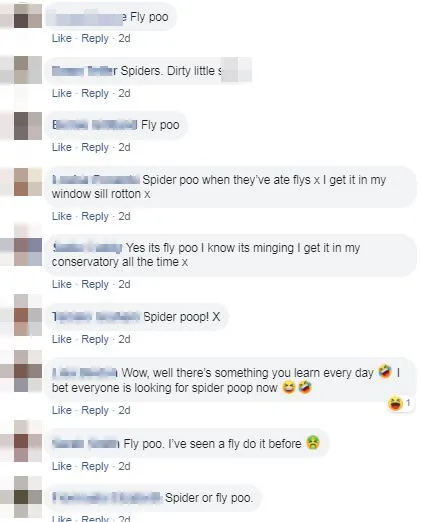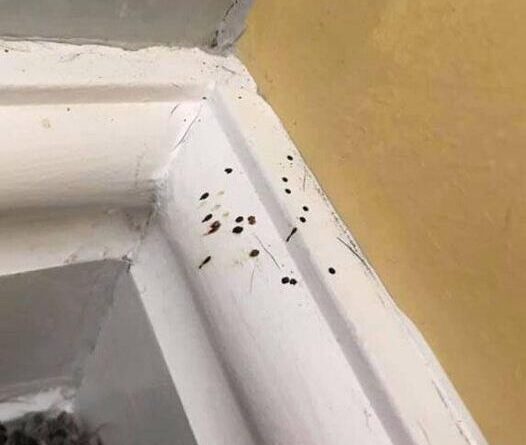If you spot these mysterious black dots in your kitchen, you had better know what they mean
“Does anyone know what this is?” she inquired, perplexed. “It’s just shown up this past week along the skirting board in my dining room, and there are also specks of it on the wallpaper and floor, even though I mop every day! It doesn’t feel raised; it looks like some kind of paint splatter, but it’s definitely not.” Her query hung in the air.
Her followers swiftly responded with a unanimous answer – Spider droppings.

Supportive members of Mrs. Hinch’s community quickly came to her aid, confidently confirming that the mysterious markings were indeed spider feces. One user remarked, “It’s quite common this time of year, spiders leaving their droppings everywhere. Dettox spray works wonders.” Another chimed in, “Those are definitely spider droppings after they’ve had a feast on flies. I find them on my window sill too.” While some speculated it might be “fly poo,” one user was adamant, stating, “Without a doubt, it’s spider poo.”
But what do the experts have to say?
Various sources providing guidance on pest control suggest that spiders typically don’t leave solid droppings; instead, their excrement tends to be thick and liquid, resembling dark ink stains on surfaces.
Spider feces, being liquid in nature, present as dark stains or drips on walls and other surfaces. The appearance of these droppings can vary depending on the spider species, posing a challenge for the untrained eye to identify.
Typically found beneath spider webs, especially in corners with cobwebs, their droppings may unexpectedly appear in different areas due to spiders seeking dark or undisturbed spaces for shelter. The size of spider droppings is usually akin to that of a pinhead, displaying monotonous colors such as white, black, gray, or brown.
But is spider poo hazardous?
While there’s no evidence suggesting that spider feces transmit pathogens, it’s prudent to handle them with caution, treating them as potentially harmful. Research indicates that pathogens ingested by spiders typically don’t pass through their droppings.
Nevertheless, it’s recommended to wash hands thoroughly with soap and water after handling spider droppings. Fresh droppings are easier to clean, whereas dried ones may necessitate more effort and could leave behind yellow stains.
It’s important to recognize that cleaning spider droppings doesn’t eliminate the spiders themselves. To prevent a recurrence of droppings, it’s essential to take action against these creatures by maintaining a meticulously clean environment and promptly removing any spider webs. Additionally, there are various products available to combat infestations, and professional pest control services are adept at handling such situations.

